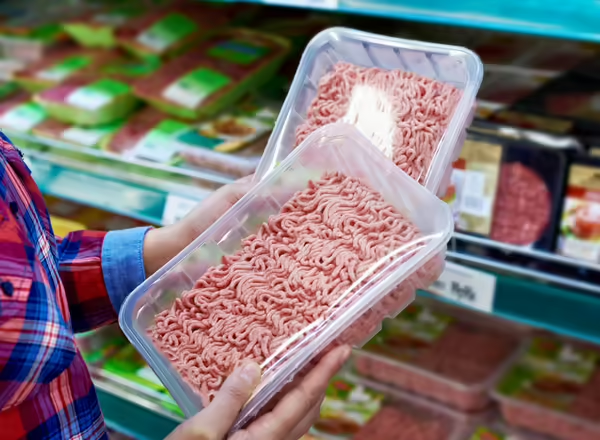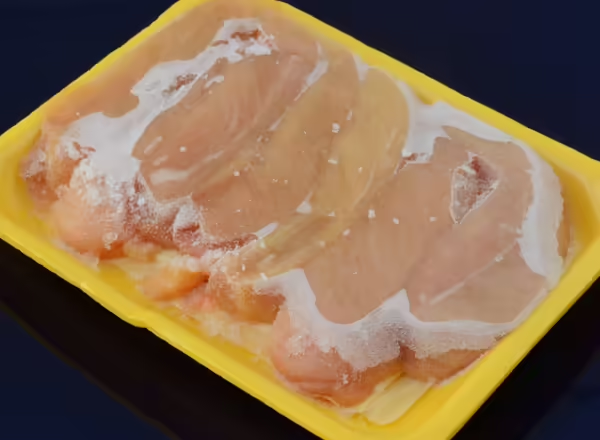
Divide your shopping cart or basket into two sections. Use one section for ready-to-eat, pre-packaged foods and foods that do not require cooking before eating. Place raw foods that do require cooking, including raw meat, raw poultry, and raw seafood, in the other section. Double-bag raw meats to contain any meat juices that could leak or drip through the store packaging.

Always choose frozen foods from a freezer case at the store, and make sure frozen meat is solidly frozen. Avoid buying meat with visible ice crystals on it or whose packaging has frozen liquid or ice on the surface. Those can be indicators that the meat has been above freezing at some point during transport and storage, which creates a food safety concern.
Freezer-burn looks like dry, leathery spots on meat and happens when meat is stored for a long time in the freezer or in packaging not designed for freezing. Meat with freezer burn is safe to eat; however, many people choose to cut off the burnt parts before cooking.

Shop for shelf-stable items first. Pick up hot and cold items last. This will limit the amount of time foods spend in the temperature danger zone of 40 F to 140 F, where bacteria grow easily. These foods should never be left at room temperature for more than two hours.
Did You Know?
Follow the 2-Hour Rule
Refrigerate perishable foods within two hours to minimize the risk of foodborne illness. This becomes especially important when outdoor temperatures are above 80 F.
Minimize the Risk of Spoilage
- Make food shopping the last activity before you return home.
- Place perishable foods in insulated bags or containers to help them retain a cool temperature longer.
- Add ice or ice packs to the insulated containers.
- Keep food in a shaded area if making additional stops before reaching home.